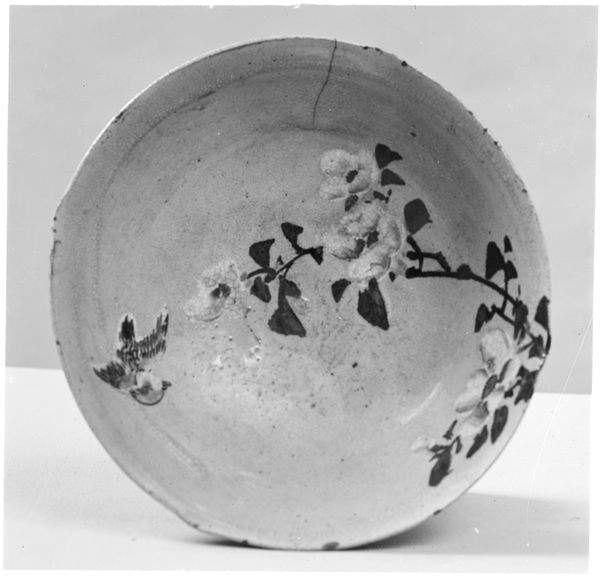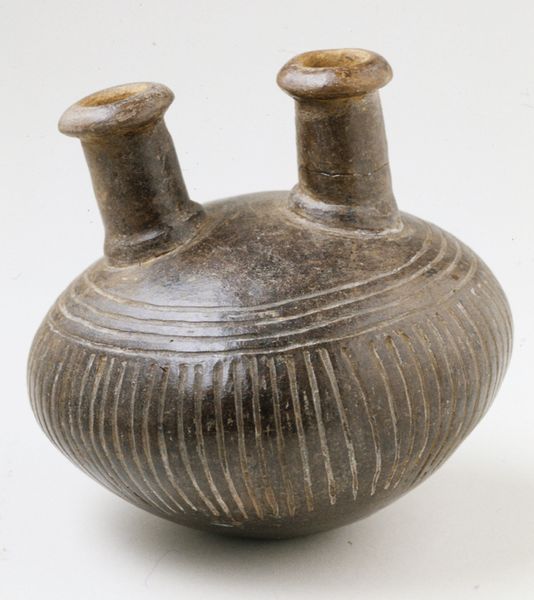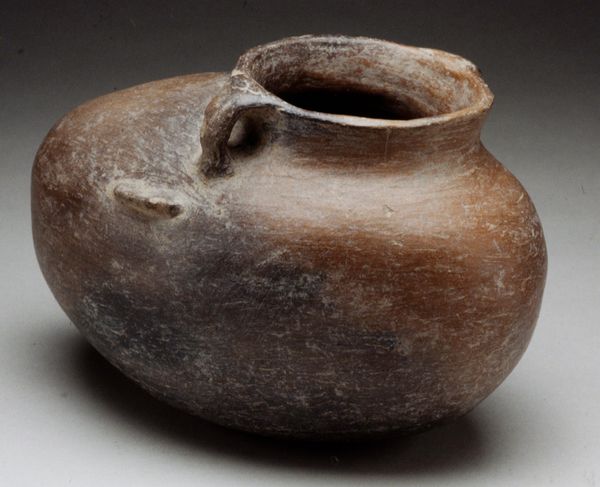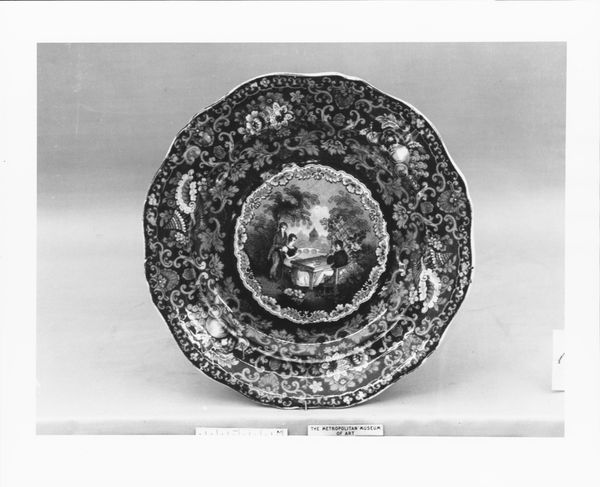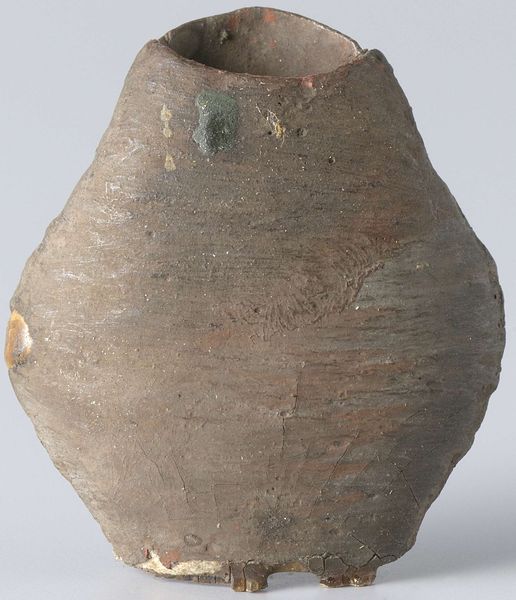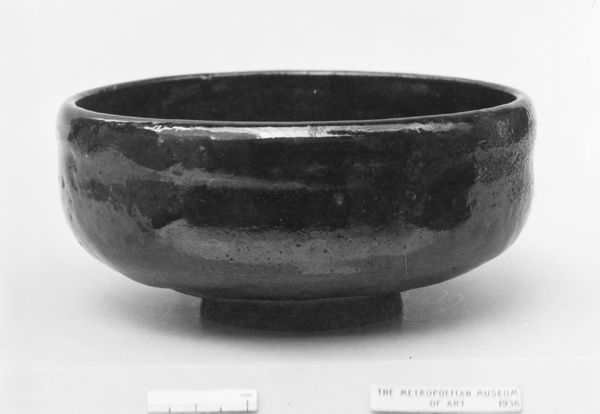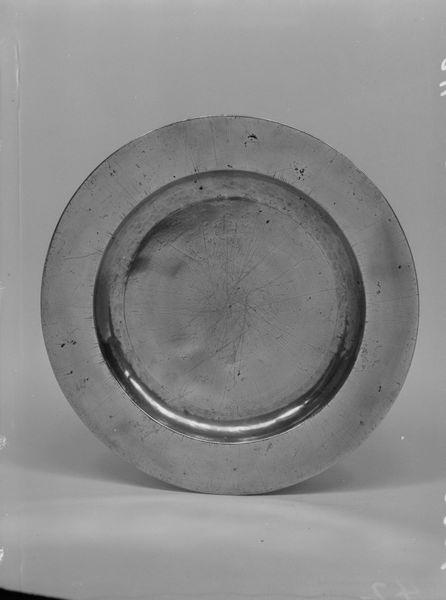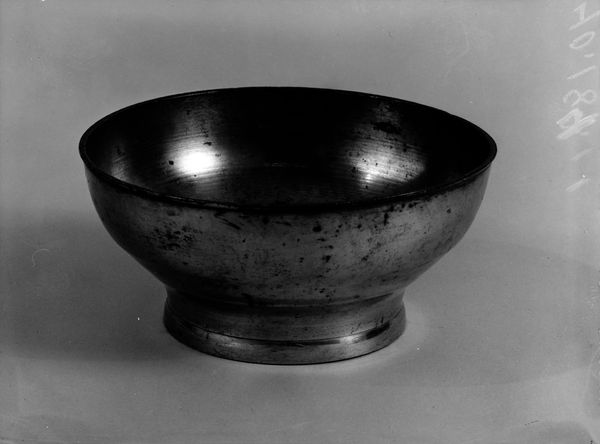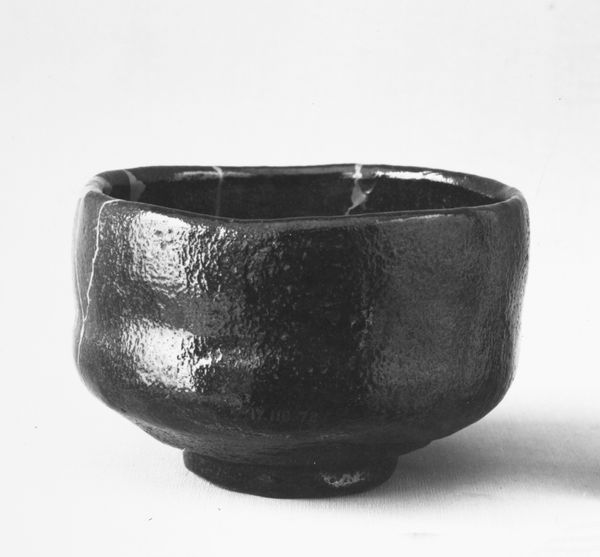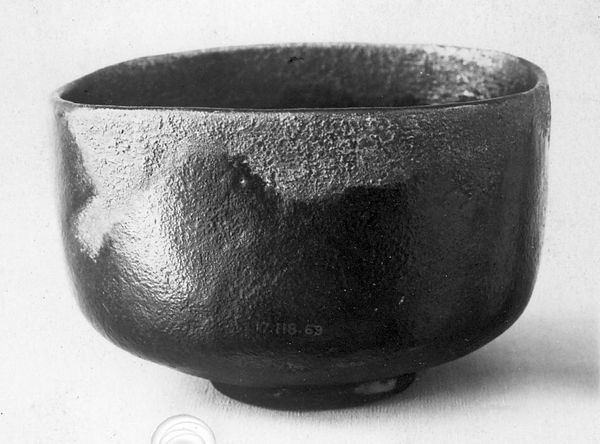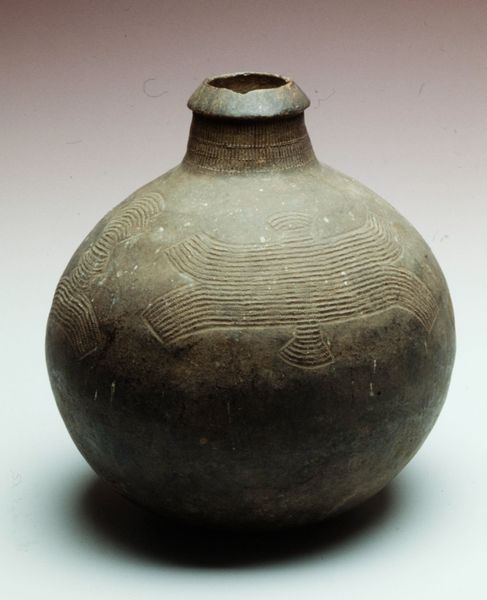
ceramic
#
asian-art
#
ceramic
#
24_meiji-period-1868-1912
Dimensions: H. 2 3/4 in. (7 cm); Diam. 5 in. (12.7 cm)
Copyright: Public Domain
Curator: We’re looking at a ceramic teabowl made during the Meiji period, between 1868 and 1912, crafted by the artist Hogen Doshun. It's currently housed at the Metropolitan Museum of Art. Editor: It’s got this beautiful wabi-sabi aesthetic going on—that embracing of imperfection. The rim is uneven, and you can almost feel the potter's hands at work. Sort of raw and yet incredibly elegant, wouldn’t you say? Curator: Absolutely. The rough texture tells a story. In Japanese tea culture, the teabowl is more than just a vessel. It’s a focal point for contemplation. Its shape, glaze, and even its imperfections, contribute to the tea-drinking experience. The white splash across the form disrupts expectations of perfect form, reflecting a specific Japanese philosophy. Editor: Symbolically, the bowl could represent a microcosm—the vastness of the universe held in a small space. The interior's dark and textured surface mirrors the unknown depths of the psyche. Curator: Yes, like a contained galaxy. Considering the Meiji period's radical modernization, this bowl feels like a conscious grounding in traditional values. The teabowl, so understated and quiet, becomes a potent symbol of cultural identity. Editor: Almost a stubborn insistence on preserving ritual amidst sweeping change, isn’t it? A tactile memory of what was, what still could be, centered on something as simple as sharing tea. It has a feeling of melancholic resolve. Curator: Precisely. These functional objects became powerful assertions of the aesthetic philosophy as new cultural symbols evolved. Holding this bowl, or imagining holding it, it's as though you are holding history in your hands. Editor: I imagine the maker hoping it’s vessels like these, ones with staying power, that would define future cultures and continue those rituals long after their life was over. Curator: Well said. I agree that pieces like this preserve memories in form and inspire me as well.
Comments
No comments
Be the first to comment and join the conversation on the ultimate creative platform.
